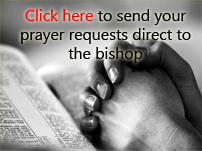Topflight Assistance/Agreement: The Key to a Successful Partnership
When it comes to business, partnerships are essential for building success. However, finding the right partner can be a daunting task. Even when you do find the perfect match, maintaining a successful relationship can prove challenging. This is why topflight assistance/agreement is crucial.
Topflight assistance/agreement refers to a mutually beneficial agreement between two parties. It involves offering and receiving support, guidance, and resources to help each other achieve a common goal. In business, this can take different forms such as collaborations, joint ventures, and strategic alliances.
Why is Topflight Assistance/Agreement Important?
Firstly, topflight assistance/agreement helps to leverage the strengths of each partner. By pooling resources, skills, and expertise, you can overcome challenges and achieve more than you would on your own. Additionally, topflight assistance/agreement provides access to new markets, customer bases, and networks.
Secondly, topflight assistance/agreement helps to share risks and reduce costs. Setting up a new business or expanding an existing one can be expensive and risky. However, with the right partner, you can share the financial burden and take calculated risks together.
Thirdly, topflight assistance/agreement helps to foster innovation. By working with a partner, you can share ideas and come up with new products, services, or processes that can give you a competitive edge.
Lastly, topflight assistance/agreement builds trust and strengthens relationships between partners. When you have a mutually beneficial partnership, you are more likely to communicate openly, resolve conflicts, and make decisions that benefit both parties.
How to Achieve Successful Topflight Assistance/Agreement
To achieve successful topflight assistance/agreement, both parties need to have clear goals, expectations, and responsibilities. Here are some tips:
1. Identify the right partner: Look for partners that have complementary strengths, values, and goals. They should also have a solid reputation, expertise, and resources to contribute.
2. Draft a clear agreement: Before starting a partnership, outline the terms of the agreement. This should include the objectives, roles, responsibilities, timelines, and metrics for measuring success.
3. Communicate effectively: Communication is key to a successful partnership. Both parties should establish clear channels of communication and schedule regular check-ins to track progress, discuss challenges, and make decisions.
4. Build trust: Successful partnerships require trust. Both parties should be transparent, honest, and reliable. This involves sharing information, respecting confidentiality, and delivering on promises.
5. Be flexible: Business environments can be unpredictable. Both parties should be open to adapting and changing the agreement as circumstances change.
In conclusion, topflight assistance/agreement is an essential element for building a successful partnership. It allows you to leverage the strengths of each partner, share risks and costs, foster innovation, and build trust. To achieve successful topflight assistance/agreement, both parties need to have clear goals, expectations, and responsibilities, communicate effectively, build trust, and be flexible.















